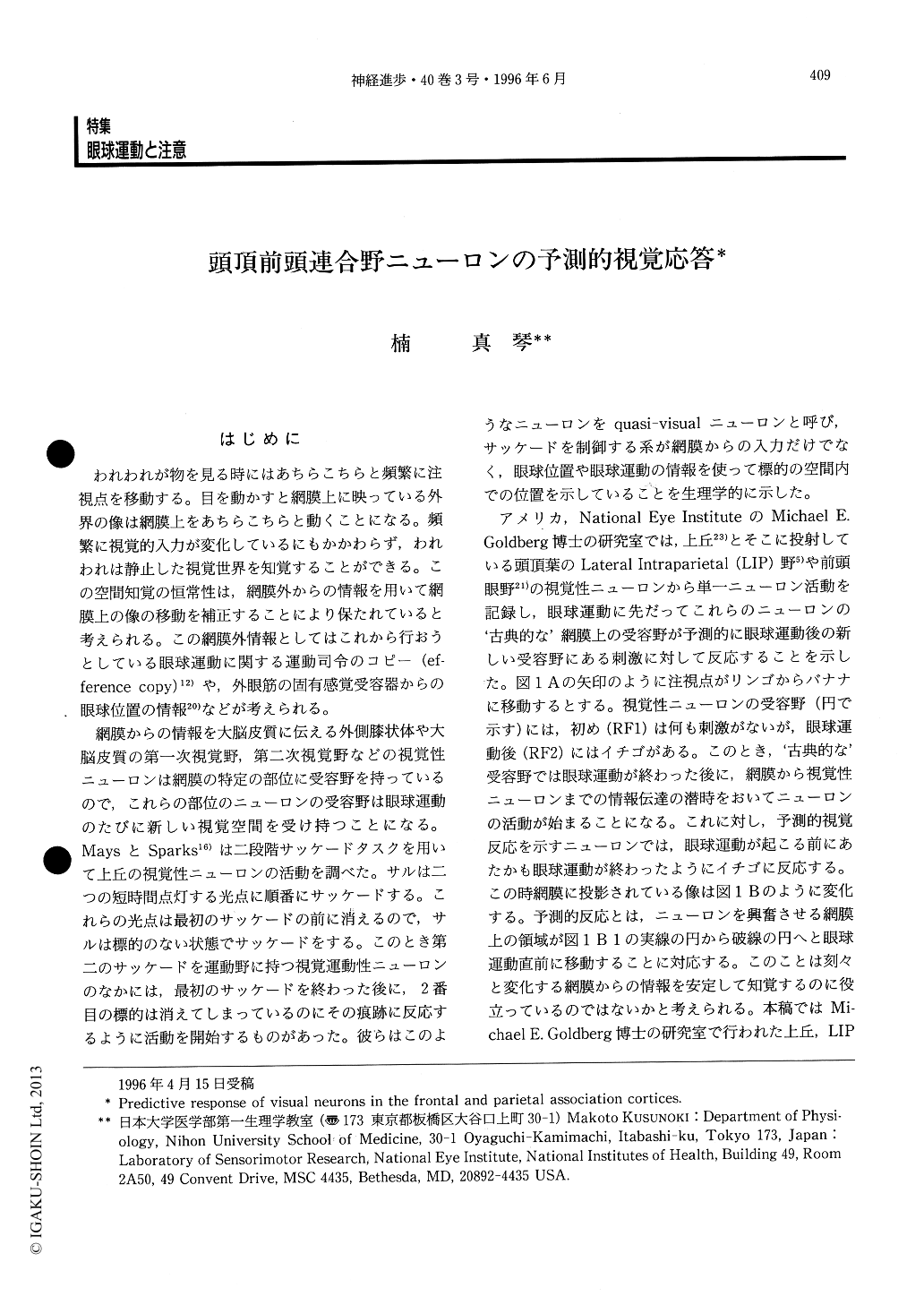Japanese
English
- 有料閲覧
- Abstract 文献概要
- 1ページ目 Look Inside
はじめに
われわれが物を見る時にはあちらこちらと頻繁に注視点を移動する。目を動かすと網膜上に映っている外界の像は網膜上をあちらこちらと動くことになる。頻繁に視覚的入力が変化しているにもかかわらず,われわれは静止した視覚世界を知覚することができる。この空間知覚の恒常性は,網膜外からの情報を用いて網膜上の像の移動を補正することにより保たれていると考えられる。この網膜外情報としてはこれから行おうとしている眼球運動に関する運動司令のコピー(efference copy)12)や,外眼筋の固有感覚受容器からの眼球位置の情報20)などが考えられる。
網膜からの情報を大脳皮質に伝える外側膝状体や大脳皮質の第一次視覚野,第二次視覚野などの視覚性ニューロンは網膜の特定の部位に受容野を持っているので,これらの部位のニューロンの受容野は眼球運動のたびに新しい視覚空間を受け持つことになる。MaysとSparks16)は二段階サッケードタスクを用いて上丘の視覚性ニューロンの活動を調べた。サルは二つの短時間点灯する光点に順番にサッケードする。
When we move our eyes, the visual image shifts on the retina. The receptive field of an individual visual neuron moves with the eyes so that after an eye movement it covers a new portion of visual space. Nevertheless, we are able to perceive a stable visual field. To achieve this visual spatial constancy, the brain has to combine the retinotopic visual input with extraretinal information about the intended eye movement.

Copyright © 1996, Igaku-Shoin Ltd. All rights reserved.


